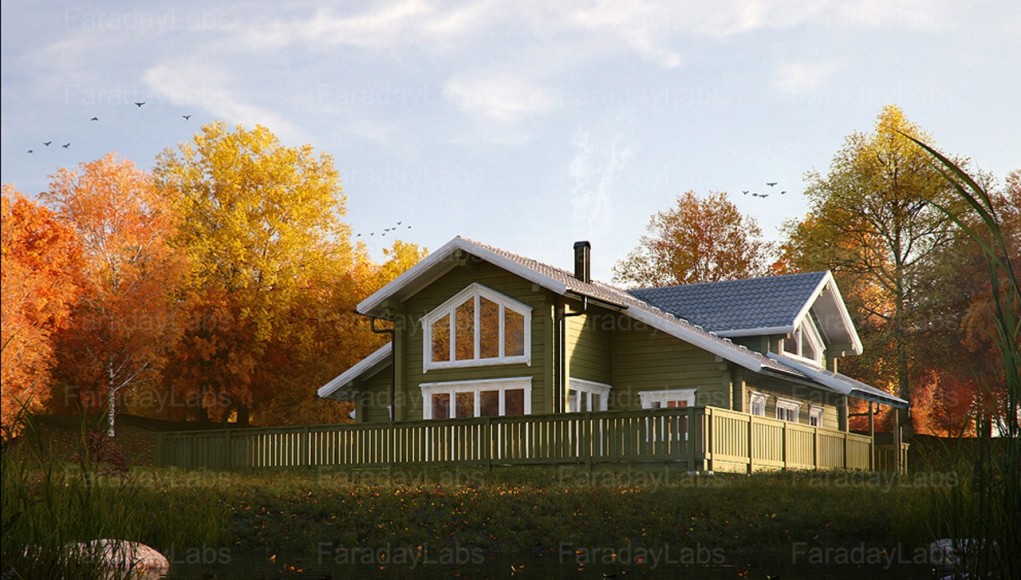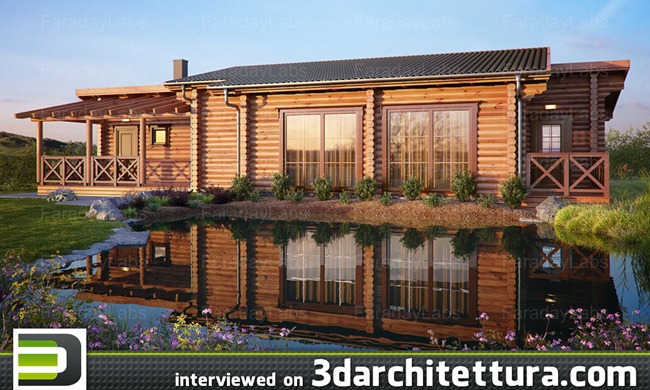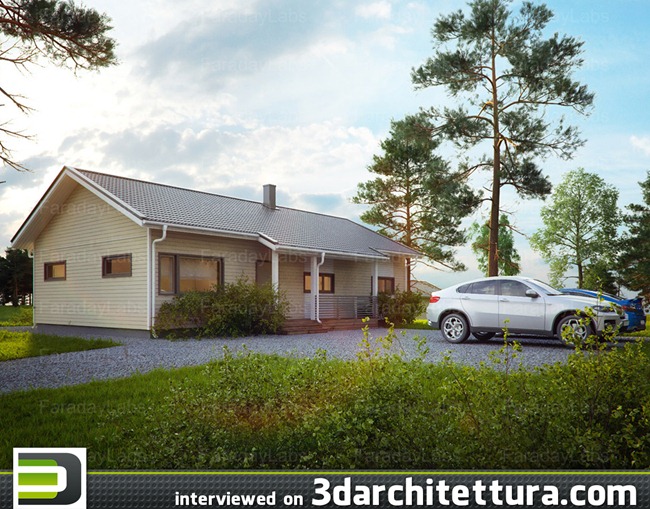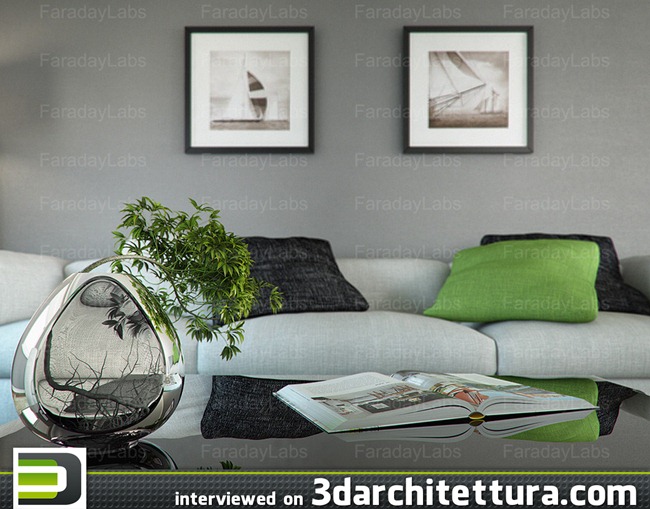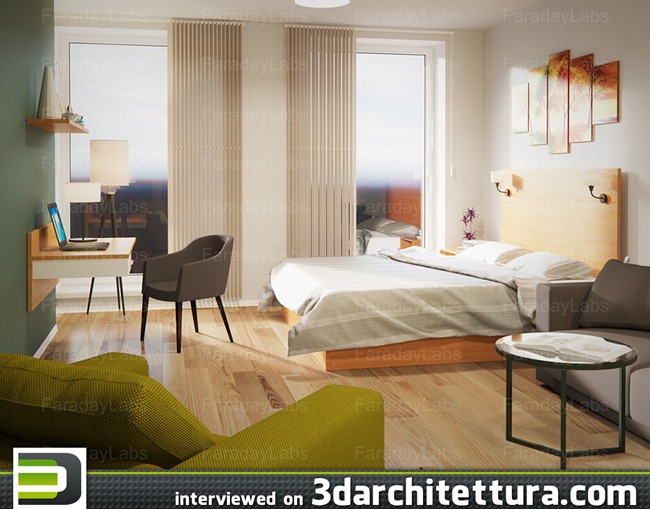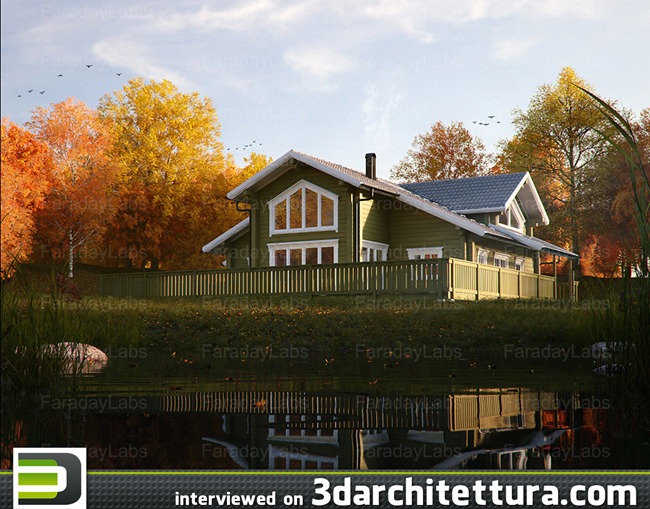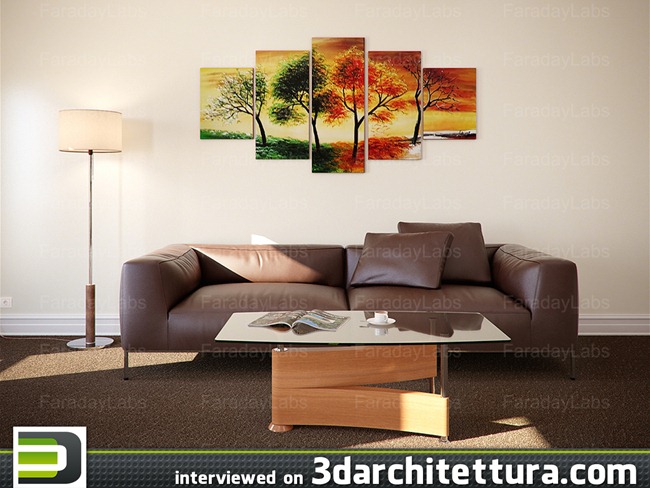Имя: Игорь Бобков
Возраст: 26
Профессия: визуализатор в Faraday
Страна: Эстония
Web site: 3d.faradaylabs.eu, www.facebook.com/faradaylabs, www.linkedin.com/company/3d-faraday
3DA: Почему вы решили заниматься 3д, с чего и когда вы начинали?
IB: В далеком 2004 году, учась еще в школе, где-то в классе 9-м, брат показал фотографию ландшафта, которая оказалась 3d-рендером, выполненным в программе Terragen. Тогда-то я и заболел ландшафтной визуализацией и все пытался приблизиться к известным мастерам на сайте www.renderosity.com Но после очередного скандала все метры ушли с сайта и, остfвшись в полном одиночестве, я решил переключиться на что-нибудь еще, связанное с 3d. Так, начиная с 2008, начал баловаться 3dsmax’ом, Zbrush’ем, пока в 2011 брат не предложил заняться этим более серьезно и на коммерческой основе. Потратив год на серьезное изучение программы, мы смогли заполучить первого клиента в конце года. Так вот все и завертелось… но обучение не прекращается. Каждый проект позволяет открыть все новые и новые возможности данной программы, которые по-истине, безграничны.
3DA: Расскажите о своем обычном подходе к работе
IB: Изначально пытаюсь получить как можно больше информации от клиента, вплоть до конкретных примеров стиля, который нравится. Много раз слышал, что перед началом творческой работы, а каждый проект, будь то интерьер или экстерьер, это творческая работа, советуют не смотреть работы других людей. В принципе, я с этим согласен, но только тогда, когда есть собственный стиль. На данный момент я еще не нашел свой стиль, поэтому приходится учиться и заимствовать у других, более опытных мастеров. И так, после того как со стилем решено, начинаю моделить. Для создания экстерьеров большую помощь оказывают плагины: multiscatter, railclone а также – forest pack pro. Когда модель готова и свет поставлен, идет согласование с клиентом. Если клиент доволен, ставятся текстуры, настраиваются материалы и опять согласования с клиентом. Только после этого финальный рендер и доводка нюансов в фотошопе.
3DA: Что вам давалось труднее всего, когда вы только начинали работать в сфере 3д, и что кажется вам трудным теперь?
IB: Изначально самое сложное в процессе обучения, как мне показалось, – это, наверное, терминология. Очень много понятий в туториалах, которые не объяснялись, а только показывались не всегда очевидные результаты. Когда, со временем, с терминологией освоился, дальнейшее обучение стало намного проще. Сейчас же, самое сложное – это создание хаоса. Ведь в реальной жизни нет абсолютно чистых поверхностей, в контексте архитектуры, к примеру, протеки от воды на стенах домов, пыль-грязь на асфальте в стыках с бордюрами и т.д. На все это надо время, а клиенты не готовы ждать, поэтому большинство текущих работ «стерильны». Так что сейчас избавиться от стерильности и навести немножко хаоса – самое сложное…
3DA: Оглядываясь назад и оценивая полученное вами образование, что бы вы хотели сделать иначе? И что вы считаете своим правильным выбором?
IB: Так как мой основной род деятельности теперь связан с архитектурой, то было бы очень полезно получить знания по архитектуре. На данный момент душа лежит не просто к статике (статичным изображениям), а больше к анимации. Иногда смотришь на конечный рендер и представляешь, как вдруг по воде пошла волна от упавшего листка, что птицы и облака не просто застыли над домом, а пролетают мимо, что длинные шторы не просто висят, а колышутся от порывов ветра… Поэтому в прошлом можно было бы больше уделить времени анимации и спец. эффектам. В остальном, не думаю, что я хотел бы что-то поменять, ведь все, чему я научился за эти годы, сделало меня тем, кто я есть.
3DA: С какой самой серьезной проблемой вы столкнулись во время работы над проектом и как вы ее решили?
IB: Самые большие проблемы, как ни странно это звучит, исходят от самих же клиентов: a. Непонимание процесса визуализации: многим кажется, что изменения на любой стадии возможны и не несут никаких затрат b. Многие клиенты начинают понимать, что они хотят только после того как увидят финальный рендер c. Многим кажется, что 3д-визуализация – это просто баловство, и оплата за такую работу не может быть высока. Но проблемы бывают не только по вине клиентов. К примеру, однажды к нам обратилось несколько потенциальных клиентов одновременно и всем им нужны были результаты в одно и тоже время. Так как разбрасываться клиентами для нас не позволительно, пришлось согласиться. Мы заранее знали, что с таким объемом работ не справимся, и стали искать фрилансеров. И были неприятно удивлены, цены оказались намного выше наших, а качество очень низкое. В итоге один проект ушел сильно в минус, но мы не потеряли клиента. В последствии, данный клиент заказал у нас еще 2 проекта
3DA: Какой прогноз вы можете сделать относительно будущего 3д-индустрии?
IB: Если делать прогнозы, то в целом индустрия 3Д будет только развиваться. Наравне с фотографией в эту область приходит все больше и больше новичков. Но в отличии от фотографии, где новички составляют серьезную конкуренцию профессионалам, в 3Д такой острой борьбы не будет, в связи с тем, что уже сейчас разрабатываются конструкторы-планировщики квартир, для пользования которыми не нужны особые знания. Любой сможет создать интерьер, а настройки рендера отданы автоматике, где на выходе имеем рендер по качеству уже сейчас превышающий многих новичков. Как пример: planoplan.com А с выходом в широкие массы устройств наподобие – Occulus Rift, необходимость в статике, может вообще пропасть, что сильно ударит по новичкам. Так что, чтобы не остаться за бортом, надо как можно скорее поднимать свой уровень мастерства, как можно выше от среднего.

 English
English
















